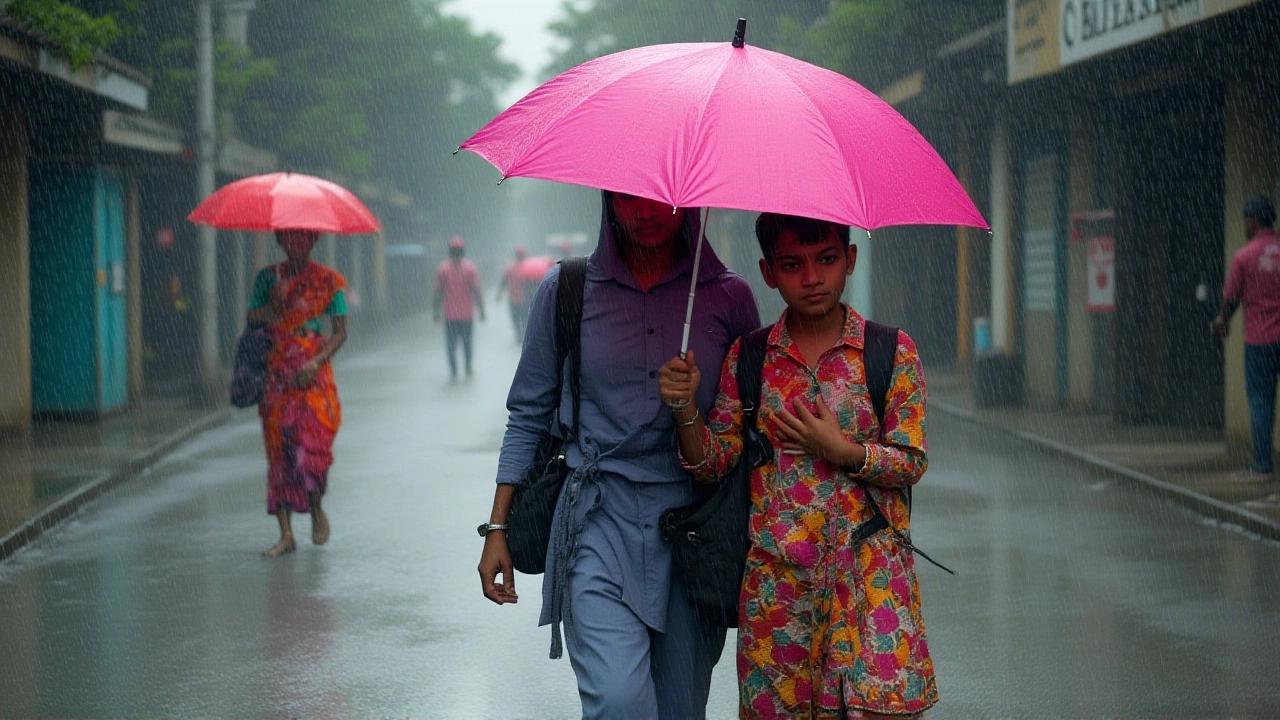When Dr. Ramesh Singh, Director of the Indian Meteorological Department issued an orange alert on for heavy rain with 40–50 km/h windsEastern Uttar Pradesh, officials warned that more than 34 districts—including Gorakhpur and nearby districts—could face pounding downpours and gusty squalls.
- Alert type: Orange (severe weather)
- Effective dates: 4 Oct 2025 – 5 Oct 2025 (extension possible)
- Wind speeds: 40–50 km/h with gusts up to 70 km/h
- Rainfall forecast: 70–120 mm in core districts
- Key districts: Gorakhpur, Varanasi, Azamgarh, Mau, Sultanpur
Background: Why the alert matters
The IMD’s orange alert is the second‑highest level of warning, reserved for conditions that could cause "significant damage to life and property." Historically, the Eastern belt of Uttar Pradesh has seen flash floods every monsoon, but this year’s atmospheric setup—a western disturbance merging with a deep tropical trough—has amplified moisture content dramatically. The department’s climate models show sea‑surface temperatures in the Arabian Sea were 1.2 °C above average in September, a factor that fuels the current deluge.
Detailed forecast and affected zones
According to the latest bulletin, districts such as Gorakhpur, Varanasi, Azamgarh, Mau, Sultanpur and surrounding talukas are slated to receive between 70 mm and 120 mm of rain between 4 and 6 October. Winds will gust from 40 km/h up to 70 km/h, especially along the Ghaghara river plains, raising the risk of localized flooding and damage to thatched roofs.
Meanwhile, the western part of the state—areas around Lucknow and Kanpur—are under a watch‑level advisory. The bulletin notes a possibility of "scattered thunderstorms" on 6 October, but no orange alert has been issued there yet.

Reactions from officials and communities
State chief minister Yogi Adityanath addressed the media in Lucknow on the afternoon of 4 October, urging residents to "stay indoors, secure loose objects and avoid low‑lying areas." He also announced that the Uttar Pradesh Disaster Management Authority has pre‑positioned 15,000 sandbags and activated 12 rescue teams in the most vulnerable districts.
Local municipal bodies, such as the Gorakhpur Nagar Palika, have already ordered the closure of schools and suspended evening public transport. In Varanasi, the Banaras Hindu University postponed its semester‑end exams, citing safety concerns for students commuting from outlying villages.
Impact assessment and safety advice
Preliminary impact estimates suggest that up to 1.2 million people could be affected by waterlogging, with potential agricultural losses amounting to ₹2.3 billion in the rice‑kharif season. Health officials warn of a surge in water‑borne diseases, urging households to boil water before consumption.
Residents are advised to:
- Keep mobile phones charged and stay tuned to IMD updates.
- Avoid crossing swollen streams; use designated bridges.
- Secure windows and doors against strong gusts.
- Store emergency kits with dry food, medicines, and flashlights.
The IMD will issue a post‑alert bulletin on 7 October to reassess the situation and determine whether a green alert or a return to normal conditions is appropriate.

Looking ahead: What’s next?
Forecasters say the western disturbance that sparked today’s rains is expected to shift eastward by early next week, potentially bringing moderate showers to Delhi and Haryana. However, the moisture corridor over the Ganga basin could linger, meaning occasional thunderstorms may continue into mid‑October. Experts from the Indian Institute of Tropical Meteorology note that climate‑change trends could make such intense, short‑duration rain events more frequent in the Indo‑Gangetic plain.
Frequently Asked Questions
Which districts are under the orange alert?
The orange alert covers 34 districts in Eastern Uttar Pradesh, notably Gorakhpur, Varanasi, Azamgarh, Mau, Sultanpur, Basti, Ballia, and Prayagraj. These areas are expected to see 70–120 mm of rain and wind gusts up to 70 km/h between 4 and 6 October.
What should residents do to stay safe?
Authorities recommend staying indoors, securing loose items, avoiding low‑lying roads, and keeping emergency supplies ready. Keep mobile phones charged, listen to IMD updates, and follow instructions from local officials.
Will the alert affect travel plans?
Yes. Several state highways and railway services in the warned districts are operating on a reduced timetable. Airlines from Lucknow have announced possible delays on 4‑5 October due to the weather system.
How does this event compare to past monsoon floods?
While typical monsoon floods in Uttar Pradesh last 7–10 days, this orange alert predicts a more concentrated outburst over 48 hours, driven by an unusual western disturbance. Rainfall intensity is projected to be 20‑30 % higher than the 2022 event.
When will the alert be lifted?
The IMD has slated the orange alert to remain active until 5 October, with a possible extension to 6 October if conditions worsen. A final assessment will be released on 7 October.


